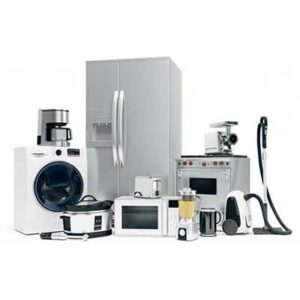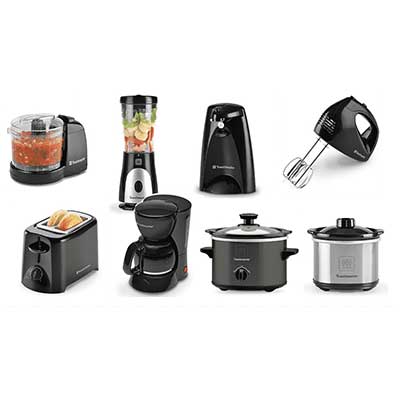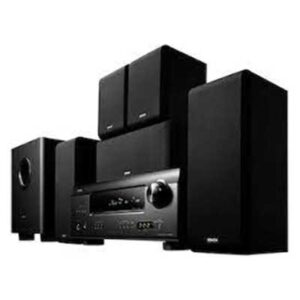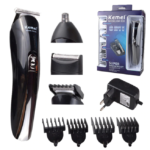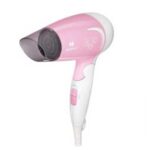Deep Freezer Maintenance: Keeping Your Appliance in Good Working Order Leave a comment
Introduction
A deep freezer is an easy method to store and preserve a large amount of food for a long length of time. However, frequent maintenance is required to guarantee that it performs well and lasts for many years. In this post, we will offer you essential information on how to maintain your deep freezer to keep it in good working order, maximize its performance, and prolong its lifetime.
After you understand the significance of appropriate deep freezer maintenance, you can take the required actions to maintain it in operating order. Following these instructions will not only save you money on repairs but will also keep your food fresh and safe to eat.
Why Is Deep Freezer Maintenance Important?
Regular deep freezer maintenance is crucial for various reasons. For starters, it guarantees that the appliance runs effectively, keeping your food at the proper temperature and quality. A well-kept deep freezer will help you prevent unpleasant shocks like finding rotten or freezer-burned food. Second, good maintenance increases the life of your device, ultimately saving you money.
Deep Freezer Cleaning and Defrosting
The Advantages of Regular Cleaning
Cleaning your deep freezer is important not just for sanitary reasons, but also for its efficiency. Regular cleaning avoids frost and ice buildup, which may obstruct optimal airflow and increase energy use.
Step-by-Step Cleaning Instructions
Follow these procedures to thoroughly clean your deep freezer:
Empty the Freezer: Remove all food products from the freezer and place them in a cooler with ice packs to keep them frozen while you clean.
Defrost the freezer by turning it off and allowing the ice to defrost naturally. To avoid inside damage, avoid using sharp items to speed up the procedure.
Clean the inside: To clean the inside surfaces, including shelves, walls, and door seals, use a light detergent and warm water combination. Avoid using strong chemicals that may cause the appliance to malfunction.
Wipe wipe: Before returning the food, thoroughly wipe the inside with a clean towel.
The Value of Defrosting
It is critical to defrost your deep freezer for optimal cooling. Ice accumulation not only limits storage capacity but also makes the compressor work harder, resulting in higher energy usage. Defrosting regularly provides adequate circulation and temperature management.
How to Organise Your Deep Freezer for Maximum Efficiency
A well-organized deep freezer enables you to maximise storage space while simply gaining access to the products you want. Here are some pointers for effective organisation:
Item Grouping and Labelling
Divide your freezer into compartments for various food categories, such as meat, vegetables, fruits, and ready-to-eat goods. Label each area to make it easier to find products and reduce the amount of time the freezer door is left open.
Making Use of Bins and Baskets
To organise comparable objects together, use clear containers or baskets. This strategy removes clutter and organises the freezer.
Food Items That Change
To prevent food waste, use the “first in, first out” principle. Rotate food items on a regular basis, shifting older stuff to the front and fresh goods to the rear.
Calibration of Temperature and Thermostat
Keeping your deep freezer at the proper temperature is critical for food preservation and energy efficiency.
Keeping the Ideal Temperature
A deep freezer should be kept between -18°C and -23°C (-0.4°F to -9.4°F). Regularly check the temperature using an appliance thermometer.
Thermostat Adjustment
Perform a simple calibration if you feel your freezer’s thermostat is wrong. Consult your appliance handbook for details on how to properly adjust the thermostat.
Gasket Inspection and Replacement
Gaskets, also known as door seals, are critical in maintaining warmth and preventing cold air from leaving.
The Importance of Gaskets in Efficiency
Air leaks caused by damaged or worn-out gaskets force the freezer to work harder to maintain the proper temperature.
How to Examine Gaskets for Damage
Examine the gaskets for apparent wear, rips, or looseness. A simple $1 bill test may help establish whether or not the gaskets form a suitable seal.
Step-by-Step Gasket Replacement
get the Correct Gasket: Make certain that you get the correct gasket type for your deep freezer.
Remove the Old Gasket: Carefully remove the old gasket out of the door. Remove any residue by cleaning the area.
Install the New Gasket: Begin by pushing the new gasket into place, making sure it fits securely all the way around the door.
Condenser Coil Cleaning
Unplug the Deep Freezer: To ensure safety, unplug the deep freezer from the power source before cleaning the condenser coils.
Locate the Coils: Depending on the type, the condenser coils are normally situated at the rear or bottom of the freezer. To get access, remove any panels or grills.
Use a Vacuum or Brush: Vacuum or brush the coils carefully to remove dust and debris. To prevent injuring the fragile coils, proceed with caution.
Wipe off the Surrounding Area: Make sure no dust or debris falls back into the coils by wiping off the surrounding area.
Reassemble the Freezer: Replace any removed panels or grills, then reconnect the freezer to the power supply.
Air Filter Inspection and Replacement
The air filter in your deep freezer ensures adequate air circulation and equal cooling throughout the appliance.
The Value of Air Circulation
Good ventilation minimises temperature changes and keeps all freezer fridge products at the proper temperature.
Examining the Air Filter
Find the air filter, which is normally near the evaporator coils or within the freezer. Examine the area for any dust or debris that might block airflow.
Changing the Air Filter
Replace the air filter if it is unclean or broken, following the manufacturer’s directions. Changing the air filter on a regular basis guarantees effective cooling and extends the life of your deep freezer.
Taking Care of Unusual Noises and Vibrations
Unusual sounds or vibrations coming from your deep freezer might signal underlying problems that must be addressed.
Detecting Potential Problems
Noises such as rattling, buzzing, or clanking may indicate a problem with the compressor, motor, or condenser coils. Vibrations may be caused by an uneven surface or a malfunctioning component.
DIY Noise Reduction Techniques
Check that the freezer is level on the floor and, if required, modify its position. To boost efficiency and decrease noise, clean the condenser coils and make sure the freezer is not overloaded.
Schedule of Regular Maintenance
Creating a maintenance plan for your deep freezer guarantees that important upkeep activities are never overlooked.
The importance of consistency
Cleaning, defrosting, and testing gaskets on a regular basis ensures that your fridge operates at peak efficiency.
Savings and Energy Efficiency
Energy-efficient practises not only help you minimise your carbon impact, but they also help you save money on your energy bill.
The Importance of Energy Efficiency
Using energy-efficient equipment and according to maintenance recommendations may drastically reduce energy use.
- Energy Conservation Suggestions
- Maintain the proper freezer temperature.
- Clean and defrost the appliance on a regular basis.
- Maintain enough airflow around the freezer.
- Organise the freezer to reduce the amount of time the door is open.
- Deep Freezer Security Measures
Follow these safety instructions to guarantee the safe and correct functioning of your deep freezer:
Ventilation and safe placement
Place the freezer on a level, firm surface with enough room around it to allow for optimal circulation and ventilation.
Dealing with Power Outages
Keep the freezer door closed during power outages to maintain the cool temperature and preserve food for as long as feasible.
Solutions to Common Deep Freezer Issues
Even with regular maintenance, several typical faults with your deep freezer may still develop.
Problems with Defrosting
If your freezer isn’t defrosting properly, look for any problems with the defrost timer, defrost heater, or defrost thermostat.
Temperature Variations
Temperature fluctuations might be caused by a broken thermostat or a clogged air vent. If required, inspect and troubleshoot these components.
Door Seal Issues
A faulty door seal may lead to air leakage and inefficiencies. Replace the gaskets according per the previous recommendations.
Conclusion
By following these maintenance procedures, you can keep your deep freezer in good working order, running effectively, and storing your food appropriately. Cleaning, defrosting, and inspecting components on a regular basis can improve the life of your appliance and save you money in the long run.
FAQs
How often should I clean out my deep freezer?
Cleaning your deep freezer every three to six months is usually plenty, although this might vary depending on use and climate.
Can I fast defrost the freezer using a hairdryer?
It is not suggested to defrost the freezer using a hairdryer or other sharp equipment, since this may cause harm to the freezer.
Is it a good idea to keep my deep freezer in the garage?
Extreme temperatures in garages might have an impact on the functioning of the freezer. It is preferable to maintain the freezer in a temperature-controlled setting.
What’s the deal with my freezer buzzing?
A buzzing sound might suggest a compressor or condenser fan issue. For a correct diagnosis, see a skilled technician.
Can I use a generator to keep my freezer functioning during a power outage?
Using a power generator to keep the freezer working during an outage is a temporary option, but be sure it is suitably sized and capable of powering equipment.

